Sugar kelp – Identification, Edibility, Distribution
Saccharina latissima
aka: Poor man’s weatherglass, Sea belt Sweet kombu, Sugar tang
Sugar kelp grows up to 4m/14ft long (usually less), with a short stem and a long blade up to 25cm/10inch wide that has wavy edges and an embossed pattern that looks a little like it has been run over by a tractor. The blade does not have a midrib and does not divide. The size and exact morphology of sugar kelp can vary considerably according to water clarity and wave/current exposure.
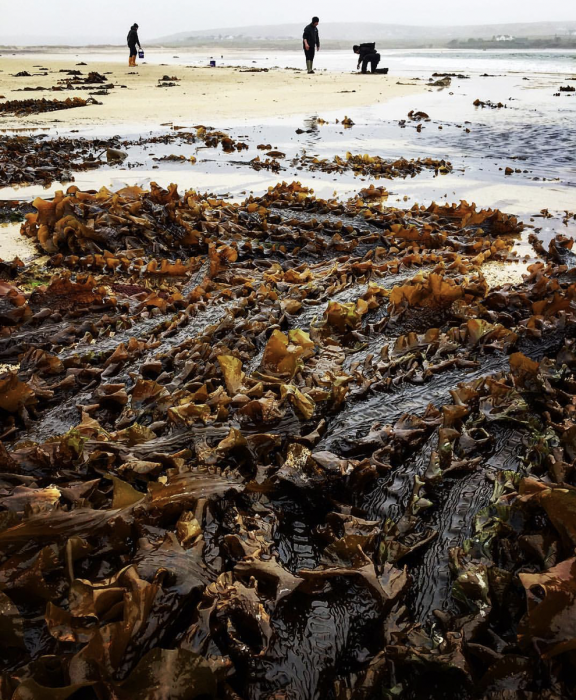
Large sugar kelp, Isle of Lewis. ©GallowayWildFoods.com
Related pages:
For in-depth films on sugar kelp, and lots, lots more, check out my Seaweed Webinar.
“The webinar was amazing! You are a good storyteller. Scientific information, combined with tips and beautiful picturing. 👏” – Kanlenaki on Instagram
“This was absolutely brilliant, thank you so very much for being so generous with your knowledge! The webinar format of videos and live worked fantastically!” – Sarah Hobbs, Webinar chat comments
Habitat: Starting from the mean low tide mark downwards, attached to rock, boulders and large stones, often in gullies.
Identification: Very distinctive elongated crenulated ribbons, reminiscent of a long, frilly feather boa. Up to 4m in length with a short, narrow cord and holdfast at the base.
Ecology: Sugar kelp takes 2 to 4 years to reach full size, becoming fertile between 8 to 15 months. Like other large kelps , it provides important food and habitat for other marine algae and creatures as well as sequestering carbon and reducing coastal erosion.
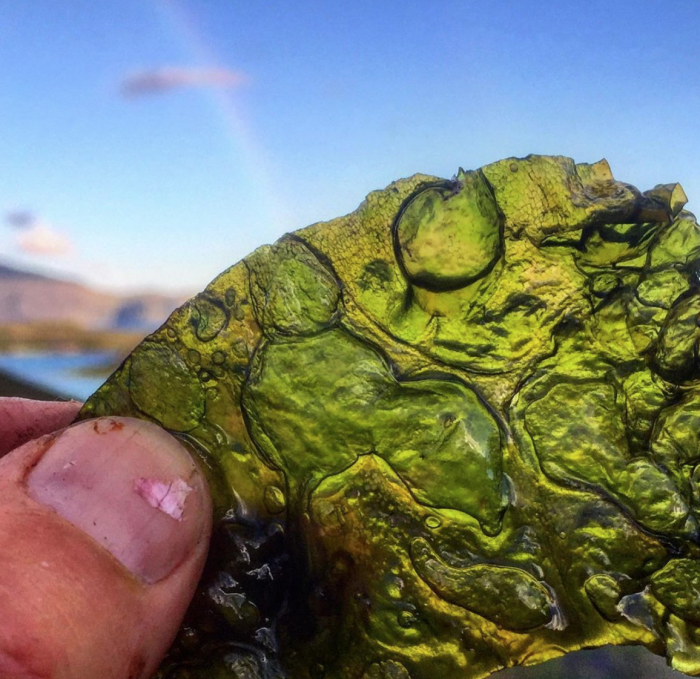
Sugar Kelp Crisp
Edible Uses: Sugar kelp is closely related to Saccharina japonica, the (farmed) seaweed basis of nearly all Japanese dashi, and can be used in similar ways – adding umami to soups, stews and stocks. However, dried dulse and laver exude more glutamates by weight than sugar kelp (read an in-depth study into this here). As they are better eating as vegetables too, I recommend using them in soups and stews, though there is no harm in adding sugar kelp to the pot in the same way as you might add bay leaves. It contains mannitol, a naturally occurring sugar that will add sweetness. Deep fried sugar kelp make excellent crisps, though I recommend a least partially drying it first to avoid dangerous fat-spitting! Younger, thinner fronds make great fat-free crisps – just fully dehydrate and lightly toast in the oven or a dry frying pan before serving. If you sprinkle them with seasoning prior to dehydration, they go to the next level. I like a combination of dehydrated fermented wild garlic, powdered dehydrated cep or smoked hen of the woods, and powdered dehydrated pepper dulse (yup – seasoning a seaweed crisp with another seaweed – its the future man!)
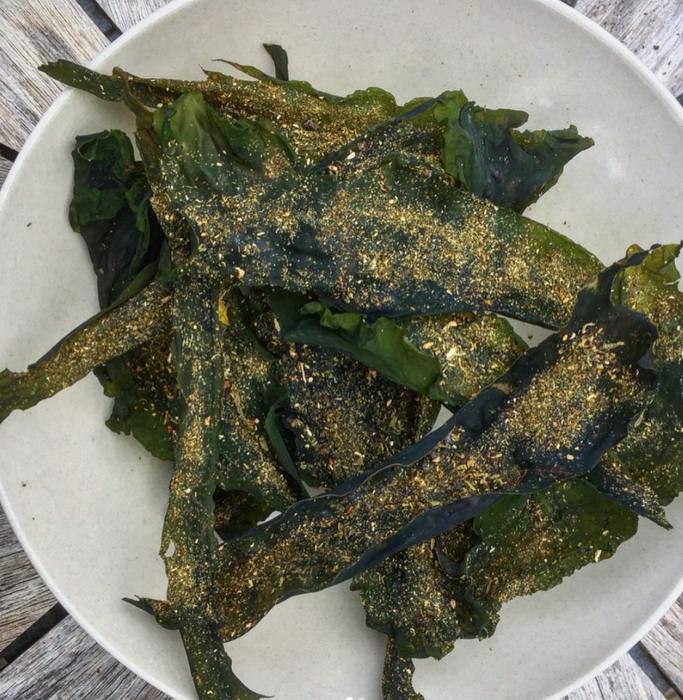
Fat free sugar kelp crisps with wild seasonings
Sustainable Harvesting: Spring to Autumn, cutting no more than 1/3rd from each frond and moving your harvesting around as well as rotating harvesting locations from year to year.
Sugar kelp drying for scottish dashi
Related pages:
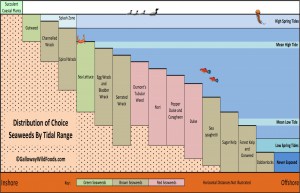
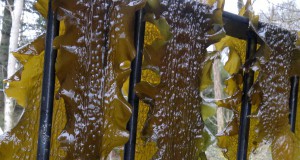
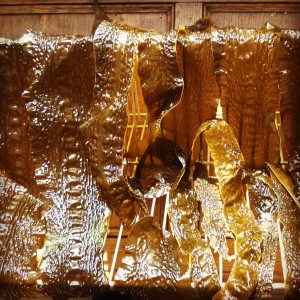
1 Comment
i have some of this dried, and have been amazed at the wonderful umami fragrance, that I felt exceeded the quality, Japanese konbu that we have. I think our Japanese konbu is wild harvested off the coast of Hokkaido and not farmed, but I may be wrong. I have been confused, calling this species sugar kelp and oar weed, I mean it’s shaped like an oar! So great to be better informed, and so interesting to know that this is the kelp most closely related to Japanese konbu.